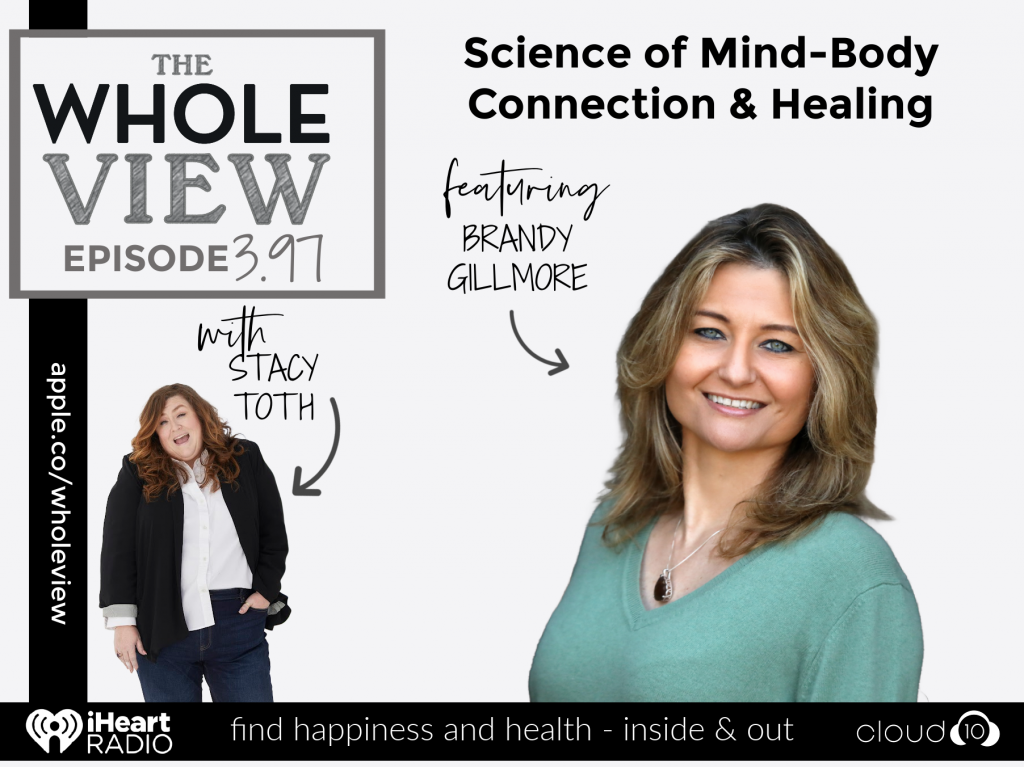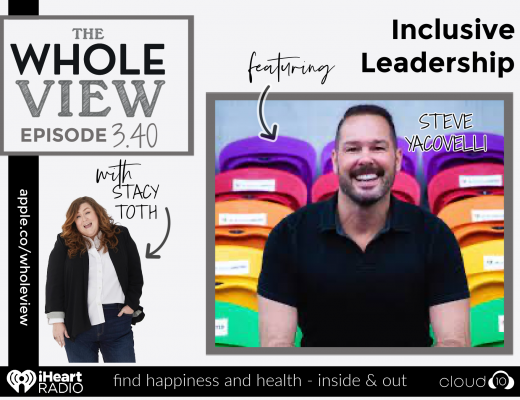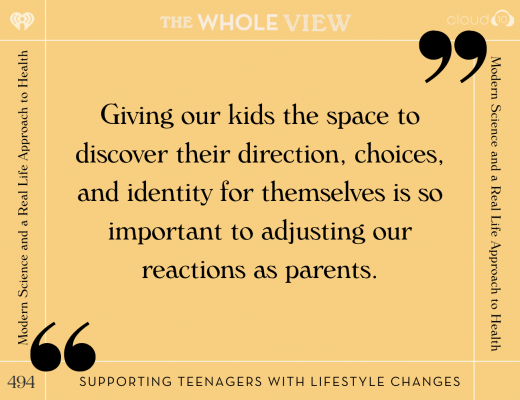Mind-Body Coach Brandy Gillmore joins Stacy to dive deep into the power and science of placebos, “alternative” therapies, recognizing the patterns in our brains, and the incredible healing power of the human mind.

Find Brandy:
- Website
- Master Your Mind and Energy to Heal Your Body: You Can Be Your Own Cure by Brandy Gillmore (releases 2/20/24)
If you enjoy the show, please leave a review. Letting people know on iTunes or however you listen that it’s worth their time could change someone’s life!

Key Takeaways
Introductions
- Brandy Gillmore is a Mind, Body & Energy coach and hosts the podcast, “Heal Yourself. Change Your Life.”
- Her discoveries for healing and life transformation began with her own devastating injury that left her painfully using a wheelchair, walker and cane for years from CRPS.
- She explored every possible method to heal and manage her pain, both conventional and alternative. When those didn’t work, she began working more with her mind.
Mind-Body Connection & Healing
Placebos
- In Brandy’s TEDx talk she shares the story that was the catalyst for her recovery. She began investigating how the mind affects our body after the study rejected her because they did not expect her to ever heal or improve symptoms, but it was the administration of a “placebo” in that study that sparked her interest.
- In fact, NIH’s website states, “In research, the placebo effect is therapeutic noise to be removed by placebo-controlled trials. Researchers rarely design studies to measure the placebo response rate directly. Placebos are a reminder of how little is known about mind-body interaction.” (2)
- Another comprehensive review in 2008 asserted: Expectations of symptom change and changes in motivation and emotions initiate and maintain some placebo responses, such as analgesia. Placebo factors have neurobiological underpinnings and actual effects on the brain and body. They are not just response biases. Other placebo responses result from less conscious processes, such as classical conditioning in the case of immune, hormonal, and respiratory functions. (3)
- A 2023 comprehensive review referenced the 1955 ground-breaking work of Henry Beecher MD on this discovery.I t’s mentioned that snake oil and bloodletting which were common medicine that helped people heal in the past did so by the placebo effect and why Beecher went on to say that “Placebos have doubtless been used for centuries by wise physicians as well as by quacks” (4)
- Additionally, a 2014 PubMed publication states that “ it may be used to benefit patients but provides a ready avenue for unscrupulous “healers” of all types.” and, “Less well studied, the “nocebo effect” defines negative responses to placebo interventions. This may be quite profound and likely is causative in many maladies believed to have psychic origins.” (5) Which is why knowing that we’re doing mind work is so important.
Mind-Body Therapies
- Chronic pain can cause mental health challenges, it can be a downward spiral. In fact, a 2018 study found that pain influences common mental disorders, stating that “Moderate to severe pain and interference due to pain are strong risk factors for first-incident or recurrent mood and anxiety disorders, independent of other mental disorders.” (6)
- And that’s not even looking at the mind-body connection, which I found 13 valid and applicable PubMed articles on doing a cursory review. I’ve put them all in the show notes for you. (7-20):
- Including one from 2014, Mind-body therapies for the self-management of chronic pain symptoms, that included 146 randomized controlled trials were included in the review, 54 of which investigated mind-body therapies and recommends to move this field of research forward.(7)
- One I particular appreciated from 2001 states that, “Successful medical rehabilitation for patients with chronic pain requires (1) appreciating the effects of biopsychosocial factors; (2) understanding neurobiologic mechanisms linking mind, brain, and body; and (3) being able to review critically and use selectively medications and interventional technologies.” Then states that “deficits in these skills now are recognized as hazardous to the public health so that medical school education and post residency training in pain medicine is now mandatory in some states.” (12)
- For reference: the biopsychosocial approach systematically considers biological, psychological, and social factors and their complex interactions in understanding health, illness, and health care delivery. (13)
- And as a 2015 publication asserts, “What becomes clear is that pain is not merely a reflection of the nociceptive input, but should be considered as a complex experience shaped by psychological factors that may be unique for each individual.” (16)
Mind-Body Therapies Continued
- A 2004 PubMed paper found evidence for mind-body therapies (relaxation, meditation, imagery, cognitive-behavioral therapy) in the treatment of pain-related medical conditions suggests future research in these areas. Based on evidence from randomized controlled trials and in many cases, systematic reviews of the literature, the following recommendations can be made:
- 1) multi-component mind-body approaches that include some combination of stress management, coping skills training, cognitive restructuring and relaxation therapy may be an appropriate adjunctive treatment for chronic pain;
- 2) multimodal mind-body approaches such as cognitive-behavioral therapy, particularly when combined with an educational/informational component, can be an effective adjunct in the management of rheumatoid and osteoarthritis;
- 3) relaxation and thermal biofeedback may be considered as a treatment for recurrent migraine while relaxation and muscle biofeedback can be an effective adjunct or stand alone therapy for recurrent tension headache;
- 4) an array of mind-body therapies (eg, imagery, hypnosis, relaxation) when employed pre-surgically, can improve recovery time and reduce pain following surgical procedures;
- 5) mind-body approaches may be considered as adjunctive therapies to help ameliorate pain during invasive medical procedures. (14)
Thermal Imaging
- And further in 2013 published expanded modalities to include: progressive muscle relaxation, meditation, laughter, mindfulness based approaches, hypnosis, guided imagery, yoga, biofeedback and cognitive behavioral therapy (20)
- Not only did this systematic review have positive findings on thermal biofeedback, but there is specific science that thermal imaging is a powerful tool for measuring pain and inflammation reduction. With the advent of newer generation infrared detectors, infrared thermal imaging is becoming a more accurate alternate medical diagnostic tool for abnormal temperature pattern measurements. Besides, better temperature sensitivity, spatial resolution and non-contact nature, IRT is an absolutely harmless imaging methodology. Studies so far indicate that, IRT can be successfully used for diagnosis of breast cancer, diabetes, dentistry, diabetic neuropathy, etc. In coming years use of IRT in medical field is likely to surge. (21)
Next Steps
- It can feel hard to access new emotions. To create a neural pathway you have to do something consistently. Find ways to amplify the feelings, release dopamine, training your nervous system to repeatedly access positive emotions.
- Brandy says that everything that you’re doing with your mind, ask yourself if your brain does this automatically, would it be a good thing?
- Our thoughts help create our lives, so if you feel stress, picture what I do want in life. Go into your own commercial of what life looks like and what you want it to look like, so it’s not an just avoidance, it’s intentional instead of an escape feeling.
Studies, References & Products
- Brandy’s TEDx Talk: https://www.youtube.com/watch?v=5dEbqRYqY_0&ab_channel=TEDxTalks
- Tomorrow and Tomorrow and Tomorrow https://amzn.to/3vxP1X2
- The Whole View Season 3, Episodes:
Studies
- Resolving Specific Psychological Stressors Can Instantly Reduce or Relieve Chronic Neck Pain and Upper Back Pain: Case Reports https://www.scirp.org/journal/paperinformation?paperid=128678
- Placebo Effect: https://pubmed.ncbi.nlm.nih.gov/10466586/
- A comprehensive review of the placebo effect: recent advances and current thought: https://pubmed.ncbi.nlm.nih.gov/17550344/
- Henry Beecher, MD’s The Powerful Placebo: https://jamanetwork.com/journals/jama/article-abstract/303530
- The placebo effect: the good, the bad, and the ugly: https://pubmed.ncbi.nlm.nih.gov/24518105/
- Pain as a risk factor for common mental disorders. https://pubmed.ncbi.nlm.nih.gov/29252911/
- Mind-body therapies for the self-management of chronic pain symptoms https://pubmed.ncbi.nlm.nih.gov/24734857/
- Reattribution to Mind-Brain Processes and Recovery From Chronic Back Pain: A Secondary Analysis of a Randomized Clinical Trial https://pubmed.ncbi.nlm.nih.gov/37768666/
- Brain changes associated with cognitive and emotional factors in chronic pain: A systematic review https://pubmed.ncbi.nlm.nih.gov/28146315/
- Are Mind-Body Exercise Beneficial for Treating Pain, Function, and Quality of Life in Middle-Aged and Old People With Chronic Pain? A Systematic Review and Meta-Analysis https://pubmed.ncbi.nlm.nih.gov/35800981/
- Mind-Body Therapies for Opioid-Treated Pain: A Systematic Review and Meta-analysis https://pubmed.ncbi.nlm.nih.gov/31682676/
- Biopsychosocial pain medicine and mind-brain-body science https://pubmed.ncbi.nlm.nih.gov/15458757/
- Biopsychosocial Approach https://www.urmc.rochester.edu/medialibraries/urmcmedia/education/md/documents/biopsychosocial-model-approach.pdf
- Mind-body therapies for the management of pain https://pubmed.ncbi.nlm.nih.gov/14668653/
- Cognitive and emotional control of pain and its disruption in chronic pain https://pubmed.ncbi.nlm.nih.gov/23719569/
- Emotional and Cognitive Influences on Pain Experience https://pubmed.ncbi.nlm.nih.gov/26436897/
- Pain perception, brain and consciousness https://pubmed.ncbi.nlm.nih.gov/12811598/
- Chronic pain and the emotional brain: specific brain activity associated with spontaneous fluctuations of intensity of chronic back pain https://pubmed.ncbi.nlm.nih.gov/17122041/
- Understanding chronic pain and the mind-body connection https://pubmed.ncbi.nlm.nih.gov/14650569/
- Mind-body therapies–use in chronic pain management https://pubmed.ncbi.nlm.nih.gov/23529519/
- Medical applications of infrared thermography: A review https://www.ncbi.nlm.nih.gov/pmc/articles/PMC7110787/
- Aldosterone: a forgotten mediator of the relationship between psychological stress and heart disease https://pubmed.ncbi.nlm.nih.gov/19631234/
- Food odors trigger an endocrine response that affects food ingestion and metabolism https://pubmed.ncbi.nlm.nih.gov/25782410/
Additional References from Brandy
- Biophotons https://ui.adsabs.harvard.edu/abs/2016PNAS..113.8753W/abstract
- Biophoton emission and diabetes https://ui.adsabs.harvard.edu/abs/1994SPIE.2328..212V/abstract
- Lost in Thought: The Risks of Meditation https://harpers.org/archive/2021/04/lost-in-thought-psychological-risks-of-meditation
- Biophotons emitting from hands https://ui.adsabs.harvard.edu/abs/2007SPIE.6633E..1JV/abstract
- Link between biophoton coherence and health https://ui.adsabs.harvard.edu/abs/2001SPIE.4597…36Z/abstract
Sponsors
- Indeed.com/WHOLEVIEW | Get a $75 sponsored job credit
- EveryPlate.com/podcast | Use code 49WHOLEVIEW for just $1.49 per meal PLUS $1 steaks for life
- Beautycounter.com/StacyToth | Get 20% off your first order with code CLEANFORALL20
Want more info on our Real Life? Healthy recipes, parenting tips, and general lifestyle stuff goes out in our Real Everything newsletter, join here.
So never want to miss a post, sale, or deal? Join my Healthy Inside & Out e-mail list for more info on non-toxic living and safer skincare!
Note: Stacy and her guests are not medical professionals. This podcast is for general educational purposes only. It is NOT intended to diagnose, advise, or treat any physical or mental illness. We always recommend you consult a licensed service provider.




